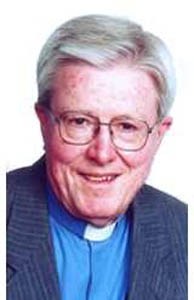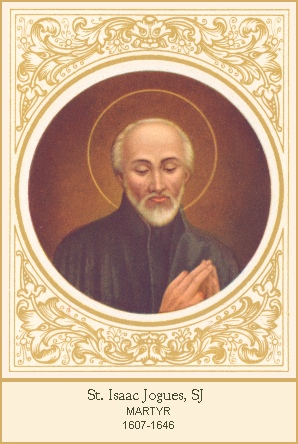 I AM EVANGELISING CHRISTIANS
I AM EVANGELISING CHRISTIANSAn Interview with Prof. Francis X. Clooney, S.J.,
Divinity School, Harvard University
Frontline, Volume 22 - Issue 19, Sep 10 - 23, 2005
India's National Magazine
from the publishers of THE HINDU
.
An excerpt from a longer interview.
.
What is comparative theology? Is its objective similar to or different from comparative studies done in the fields of, say, literature or culture? In the latter the primary aim is to identify contrasts and similarities. Does comparative theology go beyond this?
It does. There are two disciplines that are fairly well established. One is comparative religion. It is more or less like being a scientist in a laboratory, where the scientist studies different religions looking for common interests, sorting out the differences and then writing objectively about them.
The other is theology of religions, which is a Christian theological discipline of trying to make judgments about other religions in the light of the Christian faith.
For instance, Joseph Cardinal Ratzinger [Pope Benedict XVI] writing
Dominus Iesus [a 2000 Vatican document that reaffirmed the uniqueness and necessity of the Catholic Church and Jesus Christ in achieving salvation]. But the theology of religions is usually vague because it talks about
"the religions" in general. The subject could be
Judaism,
Hinduism, or any other religion. So what I tried to do with comparative theology - which is an old term from 1700, but which I was reinventing - was to use
"comparative" and
"theological" together. This discipline deals with one's own faith and background, but also then comparing across religious boundaries. My ideal is that somebody in one religious tradition would take time to study another religious tradition in some depth and then ask the question:
How does studying this other religious tradition affect me personally, my community, my Church and so on?
So it is a kind of back-and-forth process of learning from similarities and differences, but basically taking them to heart - learning from the other and allowing it to change your life.
.
Can you elaborate with reference to your latest work on the Blessed Virgin Mary and three Hindu goddesses?I have done different projects over the years - in the
Darsanas,
Purva Mimamsa,
Advaita Vedanta,
Ramanuja's
Vishista Advaita. Then I did Hindu God, Christian God, on themes in Christian theology and how they were developed also by Hindu theologians. It dealt with technical themes showing that theologians exist both in the Hindu and Christian traditions. But in that book I did not talk about gender, I did not talk about male-female issues, or about the ideas of god and goddess - in the U.S. context today these are hot issues... .
So too, women in the Church and in religion, what God is like and so on. And I decided that what I wanted to do was to take up the theme of goddesses in the Hindu religion in order to make Americans understand the goddess traditions of India.
So, the first part of it was simply to choose three goddess texts. I chose three hymns -
Sri Guna Ratna Kosa,
Saundarya Lahari and
Abhirami Andhadhi - and wrote a chapter each explaining the goddess hymns to a Christian, Western audience, which often has a very superficial understanding about goddesses. I explained them in some depth in the tradition and then, as a comparative theologian, explored what these goddesses can mean for Christians.
My book does not say that a Christian should worship Abhirami or pray to Lakshmi ( The goddess of wealth and beauty ) - which would be difficult for a Christian. Instead, it compares the goddesses with the Virgin Mary in the Catholic tradition.
It does not say that Mary is the goddess or the goddesses are Mary, but rather that there are interesting ways in which Mary has a place of reverence just like one of the goddesses.
.
In what ways? Can you give some examples?These goddesses are supreme mother figures, supreme women; they are beautiful, gracious; they are purusakara (mediator), they are the vehicles of grace for the world; people often find salvation by going to the goddess, by praying to the goddess. In the Christian tradition, in theory, you can go straight to god, or to Jesus. There is no need for goddesses. But in fact, so many Roman Catholics and the Eastern Orthodox pray to Mother Mary. And Mary is the beautiful one, the gracious one, the Mother. For many people it seemed easier to pray to Mary than directly to Jesus or to God. So you pray to Jesus, then you pray to the Mother of Jesus. But it is basically for intercession, or mediation... .Yes. So it is not exactly the same because (
important link )
Devi in the
Saundarya Lahari is supreme Goddess.
Mary is not supreme that way, but for many Christians Mary is Number 1, or seems to be so.
Apparently, your study has important implications for the debate about gender and the divine - God seen and understood in exclusively masculine terms in official theology and popular imagination - one of the important concerns of feminist theology. In the first chapter of the book I take up explicitly the issues of feminist thought and feminist theology because of the great concern expressed by many women today in the West. They are concerned about changing language, changing thought patterns in order to think from the perspective of the woman instead of just that of the male.
So there is a great debate in the West now about the female image, the female way of thinking, the female body as opposed to the male body in culture. Many feminists go back in ancient Europe looking for the goddesses before Christianity.
But very few of these feminists ever pay attention to India. They act as if only searching in European ground for statues of goddesses is a way to understand. Whereas my point is that you have thousands of years of hymns, puranas and other texts in India that talk very intelligently about God and Goddess, male and female, how to think about the similarities and differences, and what does it mean to be male and female. I hope to get Western feminists, religious or not religious, to pay attention more to India and what we can learn from the Indian traditions.
.
You primarily work across two traditions - Hinduism and Catholic Christianity.Christianity is a coherent whole (all Christian denominations agree on the Nicene Creed, the Bible is the religious book), whereas Hinduism is best understood as a culture with a religious dimension to it. Moreover, there is practically nothing that unites the innumerable schools of thought, and gods and goddesses of Hinduism.
.
Does this pose any particular challenge to doing comparative theology?Modern scholars often ask where the word
"Hinduism" came from. It is so much of a modern word. If you read back in the ancient texts, people were not calling themselves
"Hindu". And I think there is a great diversity in the Indian traditions, such a variety of theistic, non-theistic... So any comparison between Christianity and religion in India is only imperfect, or partial. But what I do is, therefore, try to narrow it down to some text, to some period of time, to one tradition.
For instance, the Sri Vaisnava tradition is not all of Hinduism by any means, but reading Ramanuja, reading Nammalvar, reading Vedanta Desika, you have a coherent piece of Hinduism, a piece of Hindu tradition.
And that is similar to coherent pieces of Christian theology, Christian religion. But also, particularly when I am teaching, I try to help my students understand that there is much greater variety in Hinduism, that there is no figure like the Pope trying to establish the identity. But if one merely says
"Hinduism can be anything", that would be too much, since then you could say almost anything. One must be specific. I never claim to speak all about Hinduism, I try to be much more selective. That is why in writing Divine Mother, Blessed Mother, I picked only three hymns. I could not speak about all goddesses, but I picked three texts with their commentaries.
Picture is of Devi the hindu mother goddesses.
Link to the original article
(here).
Who is?
.
What is ?
Sati ( Ceremony of Burning a Hindu Widow with the Body of her Late Husband )
(here) ,
(here) and
(here)Problems with?
 This is what Cardinal Rode was talking about at the start of GC35
This is what Cardinal Rode was talking about at the start of GC35
























